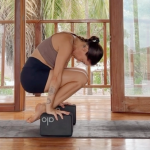Biohacking describes changes people make to their bodies to improve their physical or mental health. These hacks may be geared toward goals like weight loss, improved brain function, or increased longevity.
Some biohacking practices are seen as controversial and, at times, unethical. These include altering genetic material or inserting devices into the body.
Biohacking research is also often not as rigorous as some other medical research.
Biohacking is a complex and sometimes controversial practice with the goal of improving health.
When “hacking” their body, a person will make small, incremental changes to their diet, lifestyle, sleep habits, and more in an effort to improve their health, well-being, and longevity. Some may also use biohacks to enhance brain function, reaction time, and athletic performance, while others may use them to lose weight or cope with anxiety.
Biohacking has not been well researched but does show promise of being effective in some ways. For instance, intermittent fasting, which has been shown to support weight loss in some people, is a more widely studied form of biohacking. Another form of biohacking is wearable technology, which helps gather health data to determine what changes are needed to improve health and well-being.
There are several different types of biohacking, but the most common ones are nutrigenomics, grinders, and do-it-yourself (DIY) biology. Here is what you need to know about every kind of biohacking:
Nutrigenomics
This practice focuses on how a person’s genetic makeup impacts their response to and interaction with food. This type of biohacking aims to determine how food can affect a person’s health risks and use this information to find new ways to prevent and treat disease.
Nutrigenomics may involve avoiding certain foods linked to health conditions a person is genetically predisposed to or eating foods that may help treat or prevent certain conditions.
DIY Biology
Sometimes called garage biology, this type of biohacking is popular across blogs and social media. Experts in a particular field may share tips and techniques to help others experiment with different biohacks on themselves to reach their health goals.
Proponents argue that DIY biology creates more ideas and freedom and breaks down gatekeeping. Some examples of DIY biology might include bulletproof coffee and the keto diet.
Grinder Biohacking
People who consider themselves grinders are focused on biohacking that involves human augmentation. They might experiment with implanting devices like magnets or microchips under the skin or using technology to modify the body in some way. The goal is to enhance natural capabilities or to interact with technology in new ways.
Biohacking has not been extensively studied, so there is little concrete evidence of its effectiveness. However, some studies show the wellness approach may have potential. Here are some biohacks and their potential benefits:
Bulletproof Coffee
One popular biohack is to drink bulletproof coffee, which consists of coffee, butter, and MCT oil. When consumed in moderate amounts, researchers have found that the beverage may help people lose weight, prevent cardiovascular disease, and prevent some cancers. However, more research is needed before it can be recommended.
Cold Water Therapy
Also known as cold plunging or cryotherapy, cold water therapy involves immersing your body in cold water. This process lowers internal temperature and changes how blood flows.
Supporters of cold water therapy believe these changes can reduce muscle soreness, decrease inflammation, improve immunity, and reduce anxiety. Because cold water therapy can be dangerous for some people, you should talk to your healthcare provider before trying it.
Nootropics
Nootropics, sometimes called smart drugs, are tablets, supplements, drinks, and foods that contain substances that improve the body’s performance or boost cognitive function. Nootropics often contain caffeine or creatine.
The United States Food and Drug Administration (FDA) does not regulate supplements, and it’s possible nootropic supplements may cause adverse effects. If you are considering nootropics, you should talk to a healthcare provider first.
Wearable Technology
Some wearable technology, such as Oura rings, smartwatches, and certain headbands, allows you to collect information about your body’s functioning. Wearable technology is often considered a form of biohacking because you can collect health data on yourself and adjust your health routine based on the data.
Some proponents of biohacking believe embedded implants are the next step in wearable technology biohacking. These might include memory chips, magnetic implants, and GPS systems.
Critics of biohacking suggest some biohacks do not undergo the testing, research, and rigor that many other health and wellness approaches do. These experts are concerned about a lack of regulation and the risk of injury or illness to those using biohacks.
Health information distributed through blogs and social media may not always be backed by research. False information could lead to illnesses, worsening medical conditions, or injuries—especially if people opt for biohacking over well-studied medical treatments. Plus, not all supplements, products, and practices meet safety standards and could pose risks.
Not every biohack is right for everyone. Some research shows that intermittent fasting may not be appropriate for people with diabetes and eating disorders. Other studies show long-term intermittent fasting could increase the risk of gallstones. It’s important to discuss your biohacking plans with a healthcare provider first—even those that seem relatively harmless.
If you are new to biohacking, start with small, incremental steps to see how your body responds. You may already be engaging in biohacking, especially if you take supplements, track your steps, and monitor your hormone levels.
If you are looking to get started, here are some tips for beginners:
- Develop a plan and set achievable goals: Knowing your goals and how you plan to achieve those goals will help keep you on task and moving forward.
- Start slow: Implementing changes too quickly can overwhelm your body. Making multiple changes at once can also make it difficult to track your progress and determine which changes are working and which are not.
- Begin with simple biohacks: You can start with simple biohacks like getting more sunlight, walking in nature, reducing blue light, or using intermittent fasting. These changes are easy to implement and do not require a financial investment.
- Talk to a healthcare provider: Before trying more involved or intense biohacking, it is important to talk with a healthcare provider. They can advise you on the best options for your health, medical conditions, and fitness levels.
- Monitor progress: Rather than randomly implementing biohacks and hoping they work, note your starting baselines and observe how your body responds and how those measures change. Tracking your progress will help you know whether you are on the right track or need to pivot and try something else.
While some biohacks are safe to implement at home, others may require consulting a healthcare provider. If you want to improve your health, well-being, and longevity, plenty of reliable methods are safe and effective.
Here are a few healthy habits to consider prioritizing in your life:
- Eat a nutritious diet
- Exercise consistently
- Limit time spent sitting
- Practice relaxation techniques like deep breathing and meditation
- Reduce stress
- Prioritize sleep
- Practice gratitude
- Limit or avoid smoking, vaping, and illegal drug use
- Limit alcohol consumption
Biohacking involves making changes to your body to improve physical or mental health. It includes DIY biology, like intermittent fasting, and less conventional experimental biotechnology, like implanted microchips.
Research on biohacking’s benefits and effectiveness is limited but promising. If you plan to engage in biohacking, it is important to discuss your plans with a healthcare provider first.





